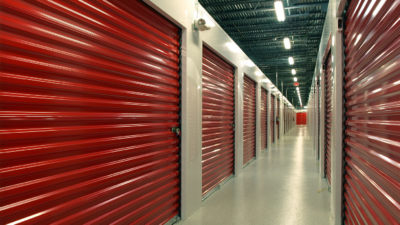The rise of e-commerce, along with the so called “Amazon effect,” has led many to predict the demise of physical retail stores. Bankruptcy filings have soared and store closures have reached record levels. A forecast by Fung Global Retail & Technology predicts nearly 9,500 store closure announcements by the end of 2017, which is a 53% increase over the number of closures even at the peak of the Great Recession. However, the over-hyped “retail apocalypse” is not upon us.
While e-commerce sales growth continues to increase at double-digit annual rates, online sales still represent only a small portion of total retail sales. Successful retailers going forward will be those that effectively blend their physical store experiences with their online presences and embrace cutting-edge technology. Also, the growing buy-online-pickup-in-store (BOPIS) trend will lead to physical stores doubling as mini-fulfillment centers.
Brick-and-mortar stores will likely remain relevant far into the future, but a strong case can be made that we will need fewer of them. Which raises the question: What will become of all the empty space, especially shuttered big-box stores?
A Case Study in Cincinnati
Many occupiers are recognizing opportunities where once many saw only a desolate parking lot covered in weeds and the dark hulk of a failed business. The vast majority of shuttered stores are located near heavily trafficked transportation networks and a large number of households. Although demographics may change over time, many of these locations still boast a significant population density that can provide both consumers and labor for various alternative uses.
In my own market, a success story is emerging in the Columbia Township area located eight miles northeast of downtown Cincinnati. Interstate 71 connects downtown with the northeastern suburbs and the Ridge Road and Highland Avenue intersection lies between working-class neighborhoods to the north and west and upper income areas to the east.
More than a decade ago, Sam’s Club and Walmart vacated stores in this area and relocated to new locations nearby during the time when the superstore concept was popular. A Kmart in the area closed during the early rounds of Sears and Kmart closures. These spaces sat dark until recently, as many began to realize the potential offered by these sites.
A few years ago, the vacant Kmart building was acquired by local manufacturer, CBT Co., which demolished the existing building and constructed a new headquarters and a plant on the site. Cincinnati Children’s Hospital signed a lease for the remaining 43,000 square feet of the vacant Walmart space, while a self-storage operator purchased the Sam’s Club building. A former grocery store, Remke Markets, is in the process of being converted to an indoor trampoline park. Four very different alternative uses have found new homes in excess retail spaces.
How to Make the Most of This Opportunity
This is not an isolated case study. In the Dayton, OH neighborhood of Trotwood, investors and visionaries conducted similar conversions of retail properties. EPIX Tube Company acquired a shuttered Kmart directly across the street from their existing plant in order to expand production lines in the existing building, while a former Target store is being transformed into self-storage and a production facility to manufacture rollup doors for the operator’s facilities nationwide.
Fred Burkhardt, executive director of the Trotwood Community Improvement Corp., believes that communities need to be proactive in attracting alternative uses. Too many people, he says, will fall into the “remember when” mindset and wax nostalgic about the past, even to the point of trying to recreate an environment that is no longer relevant to today’s economy. It is highly unlikely that another big-box retailer is going to open up in that old Walmart.
When confronted with vacant big-box stores, communities need to make an affirmative decision to reposition that vacant retail space for alternative uses. That means proactively changing zoning to accommodate new uses and letting the commercial real estate industry know that they are open to new ideas.
The top priority is attracting mid- to upper-level jobs, and often manufacturing uses fit the bill. Other considerations include assessing the long-term sustainability of the business, along with determining whether the company is a good fit as well as a good community partner.
The Future Looks Bright
While retail is not the only property type that is experiencing an increasing level of adaptive reuse, it offers some advantages. In general, the sites are easily accessible, located near densely populated areas and require less in the way of major renovations to the base building structure.
Going forward, it is likely that more and more former retail properties will find new uses and the possibilities appear endless — including manufacturing, distribution, medical, office, entertainment, mixed-use, multifamily, data centers and more.
An architect turned broker turned researcher with a life-long curiosity about the built environment, Loren analyzes trends and data to provide insight to brokers and clients. He is passionate about making sense of the numbers and creating a value proposition through the story that they tell.

 Loren DeFilippo
Loren DeFilippo
 Craig Hurvitz
Craig Hurvitz
 Aaron Jodka
Aaron Jodka